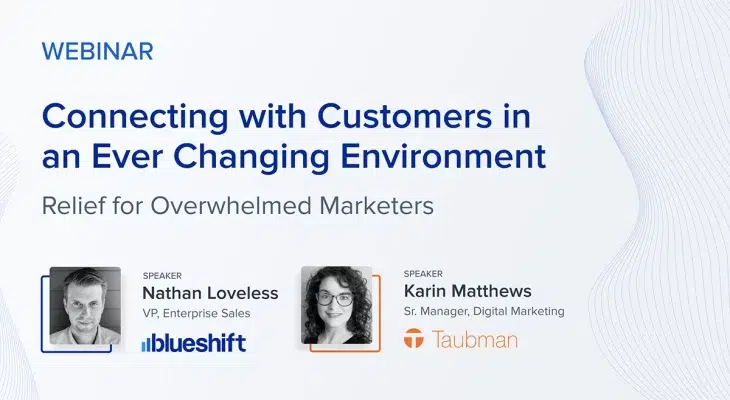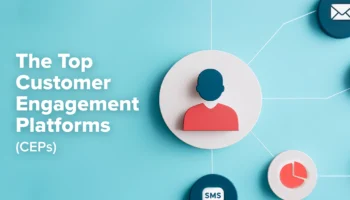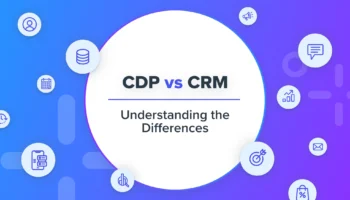As your brand and countless others face challenges resulting from Covid, the death of third-party cookies, and the transient nature of organizational and departmental structures, it’s imperative to adopt a fresh strategic perspective in order to succeed. If you’re overwhelmed by all of the potential marketing avenues your brand can take to engage customers, you’re not alone. In fact, as marketers, we’re right there with you.
To cut through all of the industry noise, listen to who truly matters: your customers. After all, they’re what keeps a brand going. When you shift to an omnichannel marketing approach, your customers become the core of your business — and that’s exactly where they belong. To make that happen, your brand needs a best-of-breed customer data platform. Thankfully, Blueshift is here to help. With guidance and expertise from our team, along with resources and events like this webinar, you’re one step closer to marketing success.
Want to watch Karin and Nathan’s conversation on-demand now and uncover your own meaningful takeaways from “Connecting with Customers in an Ever Changing Environment”? Click here to access the webinar or keep scrolling to play it below. Then, contact one of our SmartHub CDP experts at Blueshift today to schedule a demo!
This webinar covers:
- The impact of disconnected data on growth
- How to approach a personalization strategy in a cookieless future
- The role of omnichannel marketing in a marketer’s toolkit



